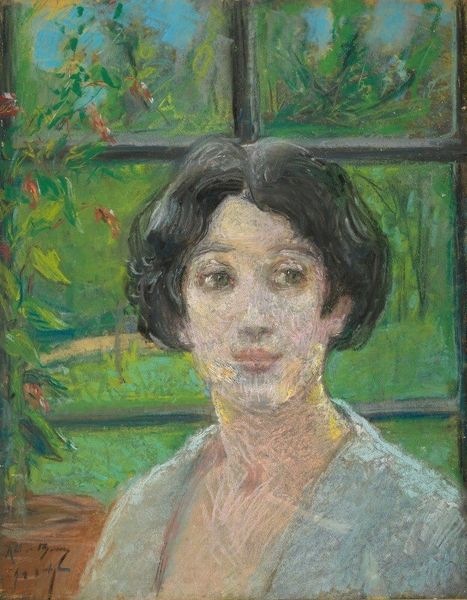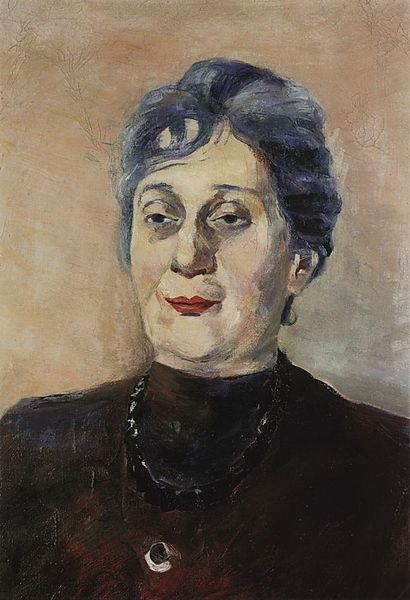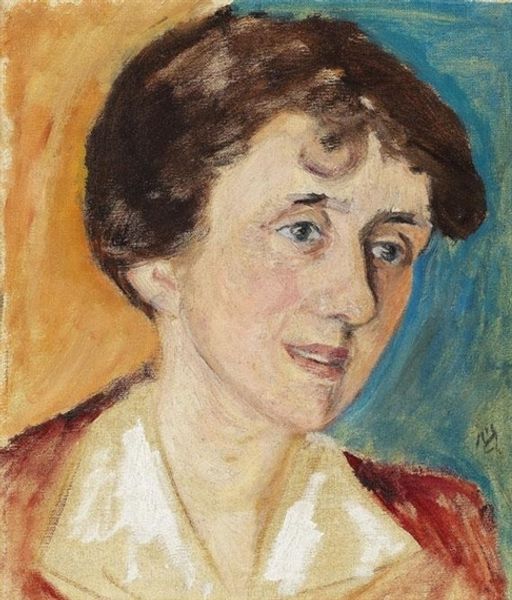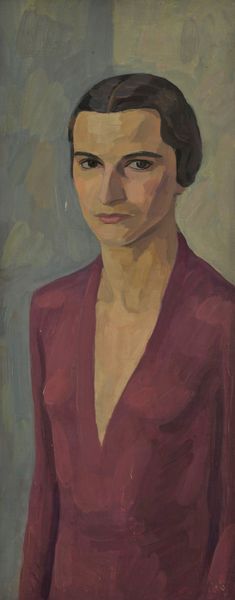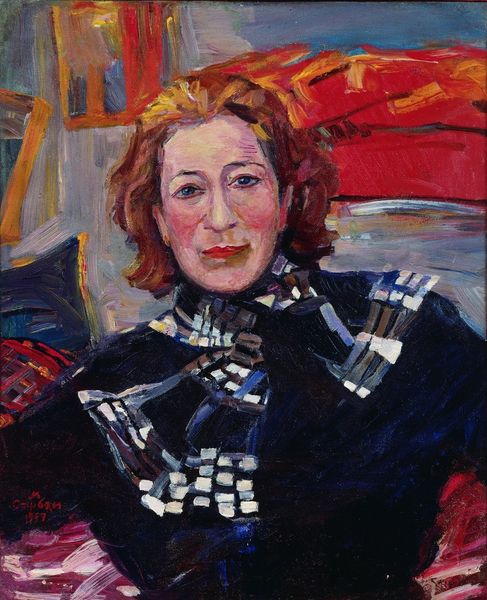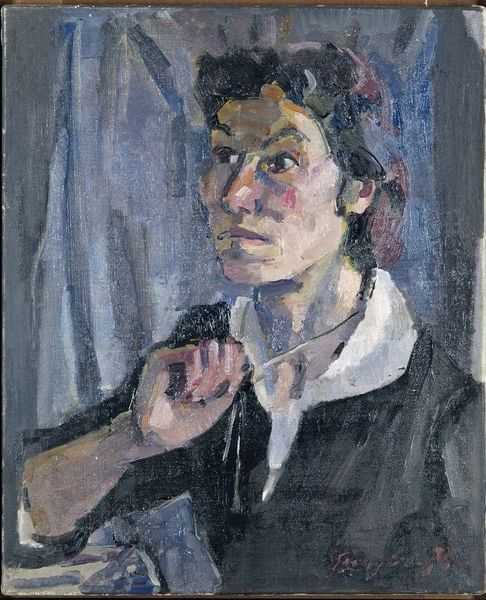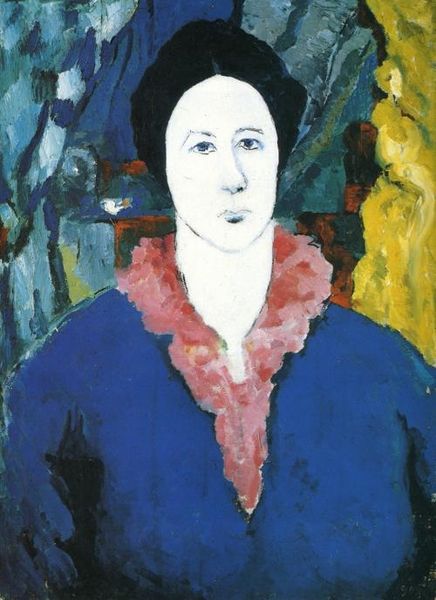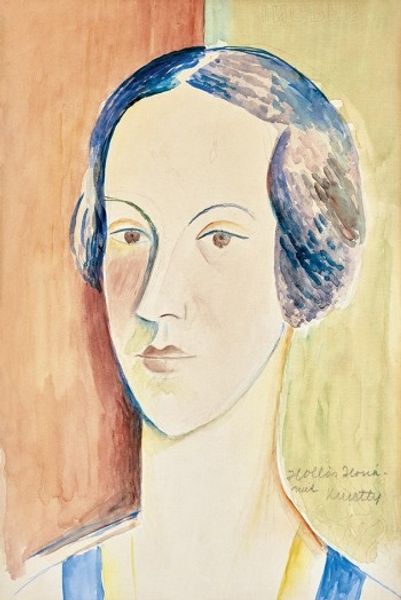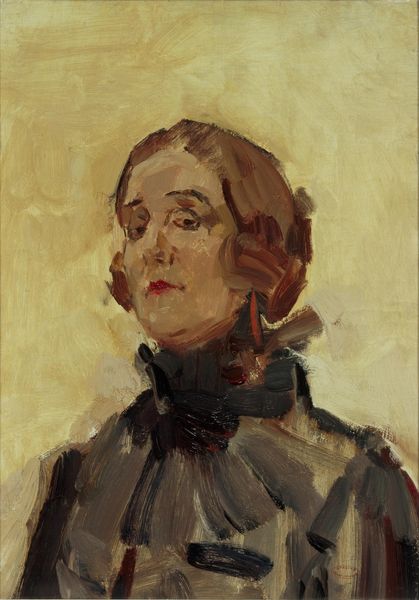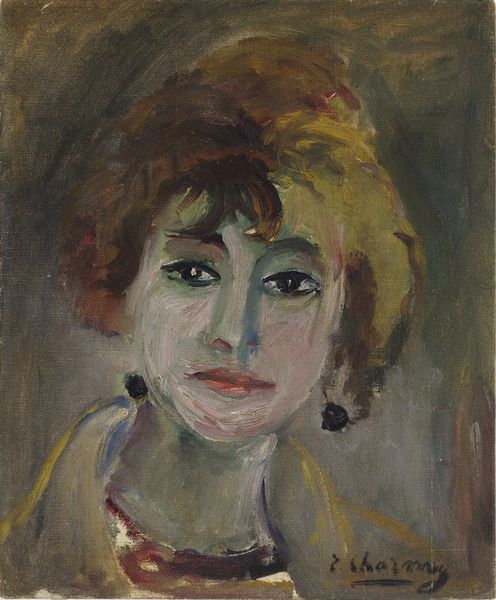![Portrait of a Woman [verso] by Mark Rothko](/_next/image?url=https%3A%2F%2Fd2w8kbdekdi1gv.cloudfront.net%2FeyJidWNrZXQiOiAiYXJ0ZXJhLWltYWdlcy1idWNrZXQiLCAia2V5IjogImFydHdvcmtzLzY5OWIxNjE0LWJjNDEtNGE4MC1iZWM2LTgxMzA1NTBlMDA4ZC82OTliMTYxNC1iYzQxLTRhODAtYmVjNi04MTMwNTUwZTAwOGRfZnVsbC5qcGciLCAiZWRpdHMiOiB7InJlc2l6ZSI6IHsid2lkdGgiOiAxOTIwLCAiaGVpZ2h0IjogMTkyMCwgImZpdCI6ICJpbnNpZGUifX19&w=1080&q=75)
drawing, painting, oil-paint
#
portrait
#
drawing
#
painting
#
oil-paint
#
oil painting
#
expressionism
Copyright: National Gallery of Art: CC0 1.0
Editor: Here we have Mark Rothko’s “Portrait of a Woman [verso]”, rendered in oil paint, ink, and possibly other media on paper. There's a raw quality to it. What stands out to me is how the composition isolates the subject against this backdrop that’s both airy and confining. How would you interpret this work? Curator: From a formalist perspective, the painting operates through a compelling tension. Note how the juxtaposition of broad, unblended planes of colour, the blues and fleshy pinks, against the stark black that defines the neck, fractures the figure, destabilising any coherent whole. The background is quite suggestive of a landscape, if it were rendered abstractly. Consider the significance of the verso, the implied ‘other side.’ Editor: You mean, how the reverse of a work might hold clues about its creation, its hidden layers? Curator: Precisely. This layering isn't merely physical but also conceptual, a subversion of the singular, fixed representation that we commonly associate with portraiture. The visible brushstrokes, for example, foreground the act of painting itself. The artist doesn’t seem interested in likeness. Editor: It’s almost as if he is deconstructing the genre. So, are you saying that Rothko uses the portrait to really talk about… painting? Curator: Precisely. To investigate the intrinsic properties of color and form. The unsettling gaze becomes a field of formal relationships. Notice that you can view her gaze straight on, with equal planes, at nearly 180 degrees. Editor: This conversation has shifted my understanding completely. I see now how his formal choices create more meaning that a direct representation might! Curator: Indeed. The essence lies not in ‘who’ is depicted but in ‘how’ depiction itself operates.
Comments
No comments
Be the first to comment and join the conversation on the ultimate creative platform.


